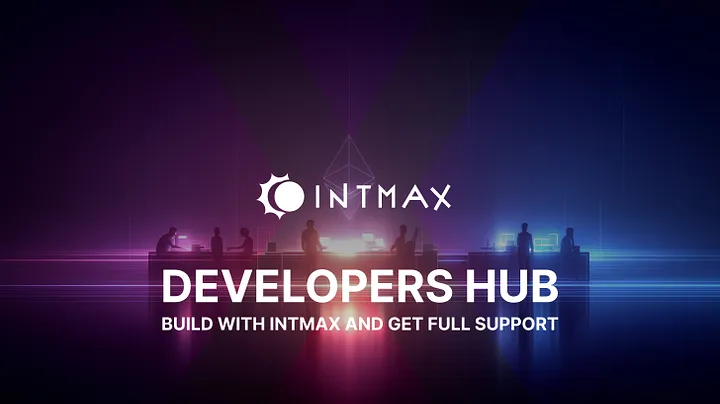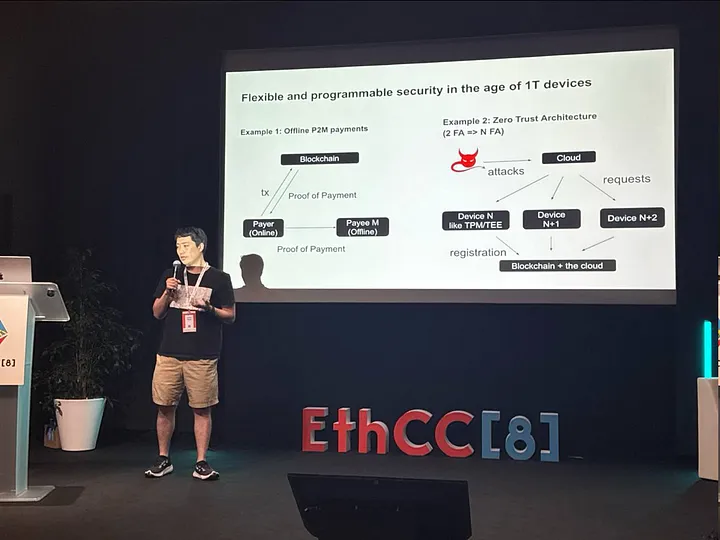Blog
Insights
From Lightning to Recursive ZK: Evolving Payment Infrastructure Across Blockchains

Intmax
Jun 25, 2025
As blockchain ecosystems evolve, the competition to scale decentralized payments has consolidated around two defining approaches: the Bitcoin Lightning Network and Ethereum-based recursive zero-knowledge rollups such as INTMAX. While both are classified as Layer 2 (L2) solutions, they differ in architecture and the political and philosophical assumptions embedded in their designs.
This article examines these differences in performance along with their implications for privacy, modularity, and the shape of financial sovereignty in a post-industrial era.
TL;DR
Lightning Network achieves speed via off-chain channels but struggles with liquidity fragmentation, routing fragility, and rising custodial centralization.
INTMAX introduces a stateless, recursive ZK-rollup architecture, shifting data responsibility to users and achieving sublinear state growth.
While Lightning fits Bitcoin’s minimalist ethos, INTMAX reimagines scalability as user-sovereign proof compression, enabling modular, privacy-preserving finance.
The future of payments lies not in throughput alone, but in infrastructures that encode privacy, composability, and incorruptible decentralization by design.
The Lightning Network: Payment Channels as a Minimalist Compromise
The Lightning Network emerged in response to a core limitation of Bitcoin: its inability to scale beyond a handful of transactions per second. In their seminal 2016 whitepaper, Joseph Poon and Thaddeus Dryja proposed an off-chain micropayment protocol built on a network of bidirectional payment channels. By deferring on-chain settlement, Lightning allows users to send near-instant, low-fee payments without bloating the base chain.
Key Properties:
Routing: Uses Hash Time-Locked Contracts (HTLCs) with onion routing
Privacy: Limited metadata can leak during multi-hop routing
Scalability: Increases with the number of channels and liquidity
Security: Non-custodial with the aid of watchtowers; dispute resolution via base layer
However, Lightning’s elegant simplicity masks several constraints:
Liquidity Fragmentation: Channels require pre-funded capital, reducing flexibility
Routing Fragility: Larger payments can fail if intermediate paths lack sufficient liquidity
Custodial Drift: Mobile-first services like Wallet of Satoshi increasingly act as centralized custodians, undermining the protocol’s decentralization ethos
Despite these issues, Lightning remains the most viable L2 payment solution within Bitcoin’s non-Turing-complete architecture. Its success in El Salvador and parts of Africa underscores its relevance where traditional banking is fragile.
Yet, Lightning’s architecture presumes a relatively fixed topology of trust where users must either maintain a persistent online presence or rely on third-party watchtowers to ensure security. This tradeoff limits its accessibility and, over time, invites a drift toward managed intermediaries. This pattern is already observable in custodial wallet adoption across the network.
Furthermore, Lightning’s design makes it unsuitable for complex financial interactions. Smart contract logic, identity validation, and programmable assets remain out of reach, as Bitcoin’s scripting language was never designed to accommodate Turing-complete operations. Lightning excels at one thing: facilitating fast, simple payments in a closed-loop system. But our emerging financial ecosystem demands more.
INTMAX: Stateless Architecture Meets Recursive ZK
Where Lightning represents a workaround for state constraints, INTMAX reimagines what blockchain state can be. It introduces a stateless ZK-rollup architecture, wherein users maintain their transaction data and submit recursive zero-knowledge proofs to verify validity. This design fundamentally alters the relationship between users, data, and the chain.
Core Innovations:
Sublinear State Growth: Only ~5 bytes of state required per transaction, independent of network size.
Client-Side Computation: Users manage their own transaction histories and balance proofs
Recursive Aggregation: Proofs can validate entire batches of transactions and nest recursively
Permissionless Aggregators: Block production is open, censorship-resistant, and stateless
By shifting computation and storage off-chain and requiring only minimal data commitments (Merkle roots) to be posted on L1, INTMAX breaks the linear relationship between transaction volume and on-chain state growth. These innovations represent a breakthrough with far-reaching implications for privacy, cost, and decentralization.
INTMAX effectively transforms the blockchain into a cryptographic anchor for proof validation, decoupling trust from state and refocusing it into a cryptographic witness. This architecture is inherently user-sovereign, whereby users hold their data, prove actions, and are not beholden to any centralized state index.
INTMAX also sidesteps a longstanding pain point in ZK rollups, namely, data availability. While most rollups rely on L1 for publishing state diffs, via calldata or blob space, INTMAX relies on the user to retain and share inclusion proofs and transaction records. This makes it possible to reach unprecedented scalability without placing additional strain on L1 bandwidth.
While both systems pursue scalability, they do so from different axiomatic starting points. Lightning tries to avoid changing Bitcoin by pushing transactions off-chain, while INTMAX transforms the chain itself into a proving engine for cryptographic statements.
INTMAX can also support composable modules. While it’s not a generalized virtual machine like Ethereum, it can integrate with smart contract logic via account abstraction and recursive validation paths. This opens the door to privacy-preserving DeFi, tokenized identity, and programmable governance. Each of these features is difficult or impossible to implement in Lightning’s framework.

Design Philosophies: Channels vs. Compression
The contrast is not merely technical. Lightning prioritizes minimalism, trustlessness, and predictability. These values align with Bitcoin’s ethos. Its architecture limits complexity by design, aiming for durability rather than extensibility.
INTMAX, by contrast, embraces a post-state paradigm. Stateless rollups do not merely optimize blockchain performance, but redefine who bears the cost of consensus. By pushing data responsibility to users and validating entire transaction sets cryptographically, INTMAX represents a civilizational reordering of computational trust.
It also redefines what it means to “scale.” INTMAX doesn’t just scale transaction throughput; it scales sovereignty. The protocol offloads complexity from public infrastructure and entrusts it to the user, resulting in a system where capacity is bounded less by the network and more by the user’s willingness to compute and prove.
INTMAX enables nested cryptographic accountability where user balance is a function of all prior state transitions, each recursively provable and cryptographically verifiable. In this sense, it isn’t just a payment tool, but a proving machine for human economic activity.
Ethical Stakes: Privacy, Censorship, and Sovereignty
Lightning Network’s HTLC-based design was not created for privacy. It merely obfuscates. Metadata leakage remains a vulnerability, and the lack of interoperability with smart contract ecosystems limits its use for complex financial workflows.
INTMAX, however, is optimized for discretion. Users share only what is necessary to prove correctness and nothing more. This ZK-native model aligns with compliance through selective disclosure, providing a bridge between institutional regulation and individual rights.
Censorship resistance is also more robust under INTMAX. Without a centralized sequencer, aggregation is permissionless. No one actor controls access to block inclusion. This makes the system resilient to both market-based centralization and state coercion.
Critically, INTMAX does not require constant network presence. It permits asynchronous operation without compromising finality or validation. This makes it suitable for jurisdictions with low connectivity, politically hostile environments, or adversarial surveillance.
In this way, INTMAX aligns with the moral aspirations of cryptographic decentralists: privacy without permission, scalability without rent-seeking, and finality without fiat.
Conclusion: Infrastructure and design philosophy
Both Lightning and INTMAX are credible solutions, but they serve different visions of the future. Lightning extends Bitcoin’s design constraints into the realm of fast payments, optimizing for robustness and ideological purity.
Lightning is a pioneering network that offers instant finality, strong privacy, and extremely high transaction capacity. While it faces certain challenges, it also delivers overwhelming benefits that more than make up for them.
INTMAX, however, invites us to transcend those constraints. It treats blockchain not as a ledger but as a cryptographic scaffold for modular, privacy-preserving systems. It pushes computation to the edge while ensuring validity through proof recursion. In doing so, it reclaims scalability not as an optimization, but as a right.
The future of payments won’t be won by performance alone. It will be determined by which infrastructures embody a just and scalable protocol for agency. In this light, recursive ZK systems like INTMAX don’t just offer higher throughput — they build upon the trail that Lightning helped blaze, offering a blueprint for incorruptible financial architecture in an age of digital overreach.
Resources
Poon, Joseph, and Thaddeus Dryja. The Bitcoin Lightning Network: Scalable Off-Chain Instant Payments. 2016. https://lightning.network/lightning-network-paper.pdf
Rybakken, Erik et al. INTMAX2: A ZK-Rollup with Minimal Onchain Data and Computation Costs Featuring Decentralized Aggregators. 2024. https://intmax.io/whitepaper
Buterin, Vitalik. “Endgame.” Ethereum Blog, 2021. https://vitalik.eth.limo/general/2021/12/06/endgame.html
Buterin, Vitalik. “The Path to Scalable, Privacy-Preserving Applications.” Ethereum Blog, 2022. https://vitalik.ca/general/2022/06/09/road.html
Boneh, Dan, et al. “ZK Proof Systems: Definitions and Directions.” Stanford Applied Cryptography, 2022.



